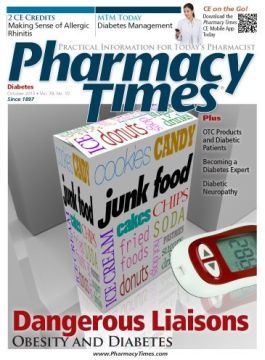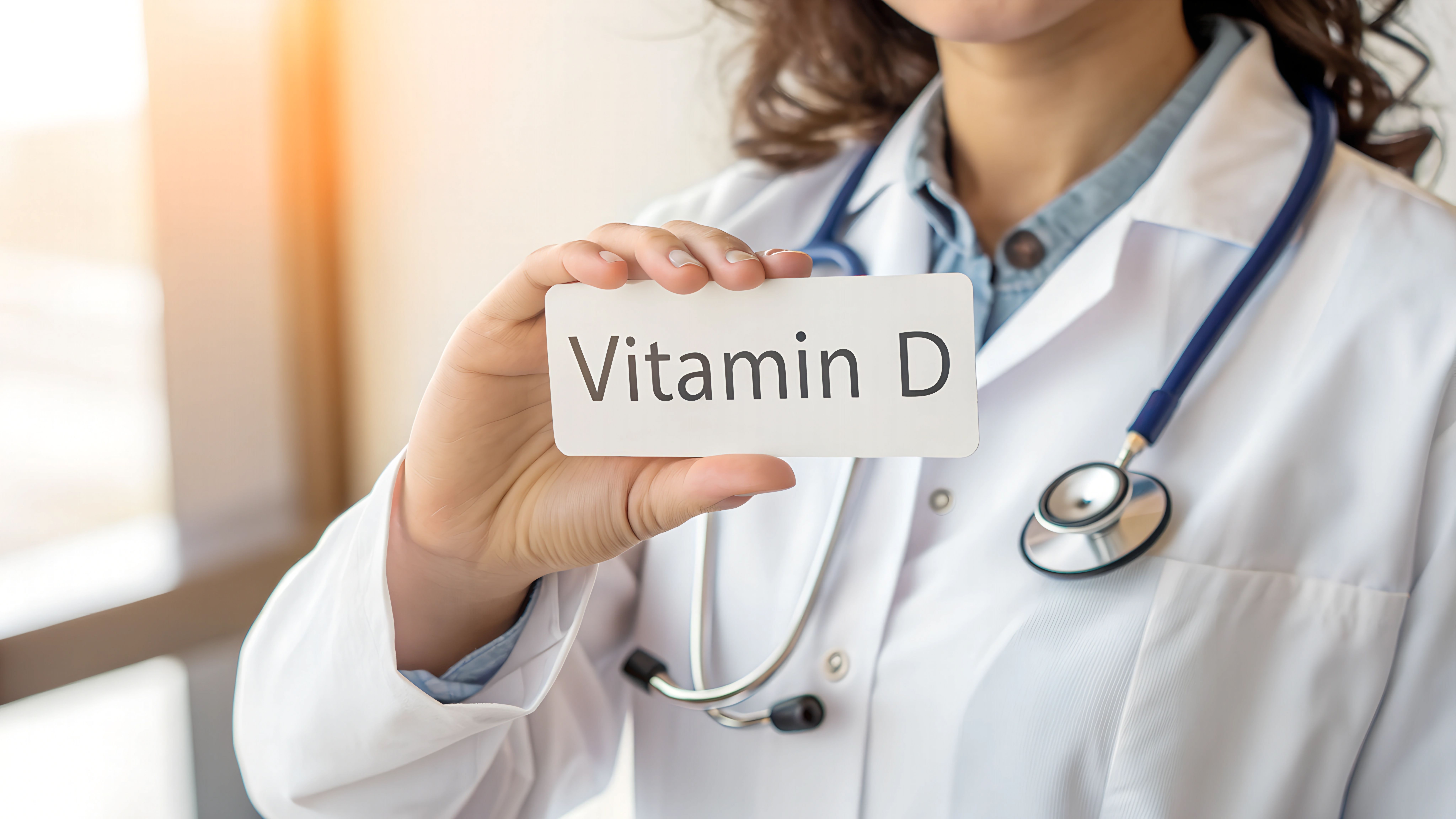Publication
Article
Pharmacy Times
Drug-Supplement Interactions: Patient Awareness Is Key
Author(s):
As supplement use escalates, patients must be made aware of potential drug"supplement interactions.
As supplement use escalates, patients must be made aware of potential drug—supplement interactions.
Results from a 2012 survey report show that an estimated 63% of adults in the United States take 1 or more nutritional/dietary supplements, indicating a 3% increase from the previous year.1 These supplements are often used in conjunction with prescription medications. While many health care professionals are aware of the significance of screening for drug—drug interactions, it is also critical to address potential drug–supplement interactions.
Some experts believe that drug—supplement interactions are not as easily recognized or managed and therefore necessitate a better understanding and more clinical interventions to improve overall patient care and safety.2,3 Results from a recent study reported that more than 50% of patients with chronic diseases or cancer may use nutritional supplements and because these patient populations are likely to take multiple medications, there is an increased risk for drug—supplement interactions.3 A drug—supplement interaction is considered to be significant if it changes a pharmacotherapeutic response or compromises a patient’s nutritional status.4
As the popularity of supplement use continues to escalate, health care professionals should ensure that patients are aware of the potential for drug—nutrient interactions. According to the Handbook of Drug—Nutrient Interactions, in some cases, potential drug—supplement interactions can be of clinical importance, but often go unrecognized by many consumers and even health care professionals.4 As a result, a drug—supplement interaction may be a contributing factor in ineffective therapy, adverse drug effects, and increased risk of deficiencies or toxicities and can negatively affect a patient’s nutritional status.4 The need to augment awareness about drug—supplement interactions is critical to patient safety, preventing potential interactions, and ensuring optimal therapeutic effects because some studies report that nearly 70% of patients taking prescription drugs do not inform their primary health care provider about their use of nutritional supplements.5 Health care professionals should encourage patients to maintain a comprehensive list of all medications, including supplements.
Many patients perceive nutritional supplements as being safe and natural without any adverse effects, and the consequences of potential drug—supplement interactions are not always widely understood or known.6 While drug–supplement interactions can be harmful to anyone, the elderly patient population may be considered at greatest risk because this patient population is more likely to take multiple medications, including nutritional–dietary supplements (Online Table 1).7-9
Table 1: Individuals at Increased Risk of Drug—Nutrient Interactions4,8-10
- Patients with chronic diseases, especially those taking multiple medications
- Elderly individuals
- The pediatric population
- Patients with poor or compromised nutritional status
- Patients with poor overall health status
- Pregnant women
Classifying Drug—Supplement Interactions
Interactions between drugs and nutritional supplements can be classified into 2 general groups—pharmacokinetic and pharmacodynamic interactions (Online Table 2).4,15-18
Table 2: Classification of Drug—Supplement Interactions 4,15-17
Pharmacokinetic interactions take place when an alteration in the absorption, distribution, metabolism, or elimination of the drug occurs. The action may increase or diminish pharmacologic activity. Examples of these types of interactions include those that involve the cytochrome P450 enzyme system.
Pharmacodynamic interactions transpire between drugs and supplements when there is any alteration in the action of a medication. These forms of interactions occur when the activity of 1 drug augments or antagonizes the other agent. Pharmacodynamic interactions are possible when the supplement’s pharmacology is comparable to or the opposite of the drug that the patient is taking.
Drug—Supplement Interactions
There are a host of potential drug—supplement interactions, and many clinical studies have investigated their significance and effects (Online Table 3). One study reported that there are several herbal and dietary supplements that can cause drug–supplement interactions, especially among patient populations that are being treated for central nervous system (CNS) or cardiovascular disorders.3,11 Results from this study also found that some classes of pharmacologic agents with the greatest potential for drug—supplement interactions include antithrombotic medications, cardiovascular medications, sedatives, antidiabetic agents, and antidepressants.3,11 In addition, results from a recent study found that agents such as warfarin, insulin, aspirin, digoxin, and ticlopidine had the most interactions reported with herbal and dietary supplements.3,10,11 The study also concluded that supplements containing St. John’s wort, calcium, magnesium, iron, and ginkgo had the greatest number of documented interactions with prescription medications.3,11 Researchers concluded that by enhancing communication between patients and clinicians regarding the use of prescription drugs and supplements, many of these potential interactions could be decreased or even prevented.3,11,12
Table 3: Examples of Potential Supplement—Drug Interactions9,15,18
Dietary/Herbal Supplement
Drug/Micronutrient
Interaction
Precautionary Measures
Vitamin A or vitamin E
(high doses)
Warfarin
Increases anticoagulation effects
Take only recommended daily required intakes
Vitamin B6
Levodopa
Levodopa antagonism, decreased effectiveness
Avoid B6 supplementation or, if possible, recommend levodopa/carbidopa combination
Phenytoin and phenobarbital
Decreased serum level of phenytoin and phenobarbital
Monitor patient levels routinely
Vitamin B12
Metformin, anticonvulsants, ascorbic acid supplements, antacids, antibiotics
Decreased absorption of cyanocobalamin
Clinical significance is unknown
Vitamin D
Phenytoin , carbamazepine,
or barbiturates
Increase metabolism of
vitamin D
Ensure adequate daily intake of vitamin D
Vitamin K
Long-term therapy with
broad-spectrum antibiotics
Vitamin K deficiency induced by decreased gut flora
Ensure adequate Vitamin K intake
Warfarin
Decreased anticoagulation, increased risk of thromboembolism
Keep daily intake of vitamin K consistent
Folic acid
Phenytoin
May inhibit folic acid absorption, leading to megaloblastic anemia
(note: Folic acid supplementation may de-
crease the serum phenytoin level and interfere with seizure control due to subtherapeutic levels of phenytoin)
Monitor phenytoin level routinely and monitor for megaloblastic anemia; consult with neurologist regarding supplementation
Niacin
Oral hypoglycemics
Decreased hypoglycemic effects
Monitor blood glucose regularly
Iron
Tetracyclines and fluoroquinolones
Decreased antibiotic and iron absorption
Take antibiotics at least 2 hours before or 6 hours after taking iron
Calcium
Corticosteroids
Inhibits Ca2+ absorption from gut, thus increasing risks for bone fractures and osteoporosis
Recommend Ca2+ supplementation.
Magnesium
Tetracyclines, fluoroquinolones, and levothyroxine
Decreased antibiotic
absorption
Separate dosing by 2 hours before or 6 hours after antibiotic
Garlic Supplements
- Warfarin
- Saquinavir
- Oral Contraceptives
1) Increased anticoagulation
2) Decreased drug level
3) Decreased effectiveness
Evidence unknown;
consult primary health care provider before use
St. John’s wort
1) CYP3A4 substrates ( ie, simvastatin, alprazolam, tacrolimus, and warfarin)
2) Digoxin
1) Reduced drug level
2) Decreased drug level
Consult primary health care provider and avoid combining with known drug interactions
Ginseng
1) Antidiabetic agents
2) Monoamine oxidase inhibitors
1) Possible additive effect of hypoglycemia
2) Interaction possible based on reports of manic-like symptoms
1) Consult primary health care provider and maintain routine blood glucose
2) Avoid combination of the 2 agents
Ginkgo
Warfarin
Possible additive effect
Use with caution or avoid combination
Melatonin
MAOIs, SSRIs, and tricyclic antidepressants
Increases melatonin level
Consult primary health care provider
Coenzyme Q 10
Certain chemo drugs
May increase or decrease toxicity of certain chemo
drugs
Consult primary health care provider
MAOIs = monoamine oxidase inhibitors; SSRIs = selective serotonin reuptake inhibitors.
Adapted from references 9, 15-18.
Studies have also demonstrated that even though there are several possible drug—supplement interactions, only a moderate number of them have significant interactions, and antithrombotic agents were most likely to interact with supplements and have many documented interactions.6,10,13,14 For example, patients on anticoagulant therapy were at greater risk of increased anticoagulant activity when the therapy was in combination with supplements that have antiplatelet properties, such as fish oil, garlic, ginseng, ginkgo, or flaxseed oil.15,16 Studies have also reported that St. John’s wort decreased therapeutic levels of agents such as verapamil, statins, antiretrovirals, and digoxin.15 St. John’s wort has been associated with serotonin syndrome in patients taking prescription psychotropic agents.16 In addition, when used in combination, St. John’s wort has been reported to induce the metabolism of drugs such as indinavir, oral contraceptives, and cyclosporine.16
All potential nutrient—drug interactions are too numerous to mention, but examples include the use of calcium, magnesium, and zinc, which may decrease the absorption of antibiotics such as tetracyclines and fluoroquinolines.8,9 Metformin and antiulcer agents may diminish absorption of vitamin B12 and folic acid, while individuals taking antidepressants may have lower levels of vitamins B6, B12, and D.8,9 The use of garlic supplements has been known to interact with anticoagulants and pose an increased risk of excessive bleeding.8,16 Individuals taking CNS drugs are at greater risk for interactions as well.8,9 Supplements such as ginkgo and ginseng may interact with these types of drugs. In addition, agents such as antiseizure drugs often adversely affect certain B vitamin levels, and several are classified as antifolates.8,9,16
Prior to recommending any nutritional supplements or a new medication, health care professionals must evaluate a patient’s medical history and medication profile to screen for potential drug—supplement interactions or contraindications. It is also crucial that patients be made aware of these potential interactions as well as understand the importance of notifying their primary health care provider of all supplements that they are taking, including alternative and complementary products. In March 2012, the National Institutes of Health (NIH) National Center for Complementary and Alternative Medicine held a meeting to discuss the issue of dietary supplement–drug interactions. A summary of the meeting can be found at http://nccam.nih.gov/news/events/druginteraction. The NIH Office of Dietary Supplements and the NIH National Center for Complementary and Alternative Medicine websites also provide excellent resources on drug—supplement interactions. The NIH Drug–Nutrient Interaction Task Force also provides excellent patient resources on its website at www.cc.nih.gov/ccc/patient_education/important_drug_food_info.html.
Ms. Terrie is a clinical pharmacy writer based in Haymarket, Virginia.
References
- “America’s Take on Vitamins” survey reveals: nearly two out of three US adults take vitamins or supplements. PRNewswire website. www.prnewswire.com/news-releases/americas-take-on-vitamins-survey-reveals-nearly-two-out-of-three-us-adults-take-vitamins-or-supplements-151728925.html. Accessed October 2, 2013.
- Boullata J. Drug and nutrition interactions: not just food for thought. J Clin Pharm Ther. 2013;38(4):269-271.
- Herbal and dietary supplements can adversely affect prescribed drugs, says extensive review. Science Daily website. www.sciencedaily.com/releases/2012/10/121024101754.htm. Accessed October 2, 2013.
- Boullata JI, Barber JR. A perspective on drug-nutrient interactions. In: Boullata JI, Armenti VT, eds. Handbook of Drug Nutrient Interactions. Totowa, NJ: Humana Press; 2004.
- Donaldson M, Touger-Decker R. Dietary supplement interactions with medications used commonly in dentistry. J Am Dent Assoc. 2013;144(7):787-794.
- Tsai H, Lin HW, Simon Pickard A, Tsai HY, Mahady GB. Evaluation of documented drug interactions and contraindications associated with herbs and dietary supplements. Medscape website. www.medscape.com/viewarticle/773337. Accessed October 2, 2013.
- Mason P. Important drug-nutrient interactions. Proc Nutr Soc. 2010;69(4):551-557.
- Bobroff L, Lentz A, Turner R. Food/drug and drug/supplement Interactions. University of Florida Institute of Food and Agricultural Services website. http://edis.ifas.ufl.edu/pdffiles/HE/HE77600.pdf. Accessed October 2, 2013.
- Huckleberry Y, Rollins C. Essential and conditionally essential nutrients. In: Krinsky D, Berardi R, Ferreri S, et al, eds. Handbook of Nonprescription Drugs. 17th ed. Washington, DC: American Pharmacists Association; 2012.
- Sood A, Sood R, Brinker FJ, Mann R, Loehrer LL, Wahner-Roedler DL. Potential for interactions between dietary supplements and prescription medications. Am J Med. 2008;121(3):207-211.
- Tsai H-H, Lin H-W, Pickard AS, Tsai H-Y, Mahady GB. Evaluation of documented drug interactions and contraindications associated with herbs and dietary supplements: a systematic literature review. Int J Clin Pract. 2012;66(11):1056. DOI: 10.1111/j.1742-1241.2012.03008.x.
- Drug supplements may interact with drugs. Natural Standard website. http://naturalstandard.com/news/news201210032.asp. Accessed October 2, 2013.
- Heck AM, DeWitt BA, Lukes AL. Potential interactions between alternative therapies and warfarin. Am J Health Syst Pharm. 2000;57:1221-1227.
- Norred CL, Brinker F. Potential coagulation effects of preoperative complementary and alternative medicines. Altern Ther Health Med. 2001;7:58-67.
- Gardiner P, Phillips R, Shaughnessy AF. Herbal and dietary supplement: drug interactions in patients with chronic illnesses. Am Fam Physician. 2008;77(1):73-78.
- McQueen C, Orr K. Natural products. In: Krinsky D, Berardi R, Ferreri S, et al, eds. Handbook of Nonprescription Drugs. 17th ed. Washington, DC: American Pharmacists Association; 2012.
- Drug—supplement interactions. Natural Medicines Comprehensive Database website. http://naturaldatabase.therapeuticresearch.com/ce/ceCourse.aspx?s=nd&pc=07-34. Accessed October 2, 2013.
- Agins AP. ADA Quick Guide to Drug-Supplement Interactions. Chicago, IL: American Dietetic Association; 2011.

Newsletter
Stay informed on drug updates, treatment guidelines, and pharmacy practice trends—subscribe to Pharmacy Times for weekly clinical insights.






